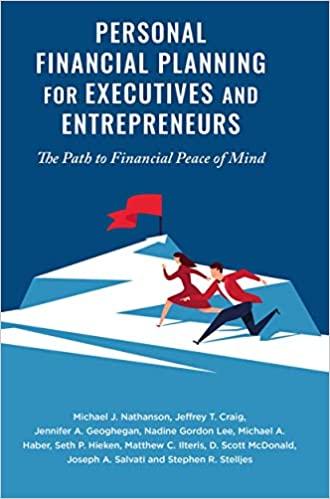Question
Pages 137 problems 4, 5 and 6 (chapter 9). from book Return on Software: Maximizing the Return on Your Software Investment Questions 4 through 6
Pages 137 problems 4, 5 and 6 (chapter 9). from book Return on Software: Maximizing the Return on Your Software Investment
Questions 4 through 6 relate to the following situation: Four different software projects have been proposed. All projects have an identical 6-year lifespan with cash-flow profiles estimated as shown in the following table.
|
| P1 | P2 | P3 | P4 |
|---|---|---|---|---|
| Investment | $200,000 | $750,000 | $200,000 | $450,000 |
| Annual revenue | $250,000 | $500,000 | $60,000 | $200,000 |
| Annual cost | $50,000 | $20,000 | $10,000 | $40,000 |
| Salvage value | $0 | $0 | $0 | $50,000 |
4. Show the matrix of all theoretically possible investment alternatives.
5. Proposal P1 is to modify an existing system, and P2 is to replace it with a commercial package, so these are mutually exclusive proposals. P3 is an optional add-on to the commercial package, so it is contingent on P2. Indicate which alternatives are not feasible and explain why they are infeasible.
6. Using the answer to the previous question, calculate the cash-flow profiles for each feasible alternative. Show the cash-flow profiles using the same format (i.e., as a table) as is shown for the original proposals.
Step by Step Solution
There are 3 Steps involved in it
Step: 1

Get Instant Access to Expert-Tailored Solutions
See step-by-step solutions with expert insights and AI powered tools for academic success
Step: 2

Step: 3

Ace Your Homework with AI
Get the answers you need in no time with our AI-driven, step-by-step assistance
Get Started


